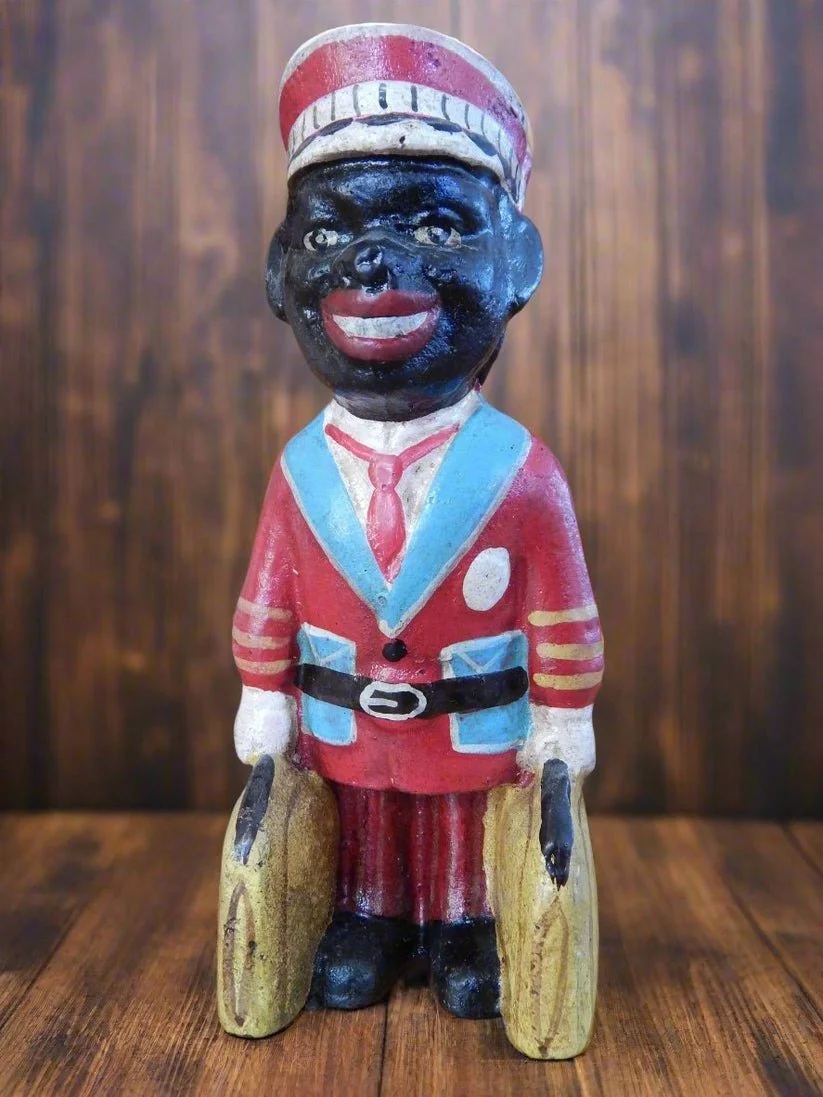Black Memorabilia Banks - Black Labor mock post-slavery as Annuities ~ Cast Iron Bank - Americana Porter Bell Hop
Historically, the trajectory of employment available to Black men in America reveals intentional constraints designed to preserve white economic mobility and class privilege. In the maritime era of early to mid-1800s New England, Black men found relative independence aboard whaling vessels sailing from towns like New Bedford, Nantucket, and Salem. Despite harsh conditions, these maritime occupations provided skill, dignity, and even moments of autonomy not available ashore.
By the turn of the 20th century, however, occupational opportunities had narrowed sharply. Roles such as Pullman porters, hotel bellhops, and railway "red caps" became primary employment avenues for Black men. Each carried its distinct, racialized significance. Pullman porters were respected within their constrained roles, their positions allowing some measure of stability and prestige within tightly defined racial boundaries. Bellhops, meanwhile, served visibly yet subserviently, their uniforms and stations a constant reminder of societal expectations. Similarly, "red caps," named for their distinctive headgear, were critical yet constrained figures in railway travel, visible yet strictly limited to baggage handling.
Even as manufacturing surged in America post-World War II, opportunities largely bypassed Black communities, with racial labor exclusion barring them from well-paying factory jobs. Figures like Malcolm X, who navigated limited roles as car parker, soda jerk and bellhop in Boston, personify this period's occupational constraints.
By the 1970s and 1980s, systematic disinvestment, coupled with intentional flooding of drugs and arms into Black communities, replaced viable economic opportunities with pathways to incarceration—a transition from labor redlining to outright criminalization and confinement. Today, automation and AI threaten the few remaining entry-level jobs that once absorbed Black men with limited educational opportunities.
Looking forward, this raises an urgent question: Where can Black men with minimal formal education turn for meaningful and sustainable employment in an increasingly automated economy? Addressing this is imperative—not simply as a historical reflection, but as a call for structural transformation to dismantle long-established labor exclusions and intentionally open pathways toward equitable economic futurity.

